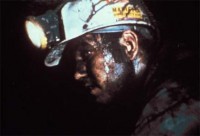
Barbara Kopple's Harlan County U.S.A.
 |
What Kopple attempts is a one-sided, hagiographic even, tribute to the labor movement, but what is most interesting, and troubled by the overall one-sidedness, is the mirroring of tactics between the sides. As the company bosses bully and harass the picketers, so the picketers harass the scabs, who, unlike the bosses, are given not one frame of face-time. Surely this is the most desperate group of all--who will feed them if they refuse work?--but Kopple equates them with gun thugs. On the other hand, murderous corruption within the union is (perhaps rightly) portrayed as an aberration, a collusion with the mining companies, something to be overcome.
The scabs, like immigrants today (to put the shoe on the other foot) are the ultimate have-nots, and they constitute that confounding element whose acknowledgement could have made for a more honest, complex, and sophisticated film. A similar narrowness of perspective (we can say with hindsight) on the miners' part is evident during a trip to New York to encourage stockholders to divest in the mining company, while taking pains to exonerate Wall Street per se.
That said, there are some wonderful unguarded moments, such as a friendly exchange between a miner and a New York cop who casually remarks on the comparative cushiness of his own job.
I hadn't time to stick around for the Q&A. If you were there, do comment and let me know if any of these issues were addressed.
The odd pillow shot and generally empathetic potrayal of impish children lend an Ozu-esque aura to Hirokazu Kore-eda's tale of two brothers separated by family turmoil (but joined by telephone line). They pin their hopes for reconciliation on the supernatural influence of a new bullet train line. But this is not a supernatural movie. The ubiquitous digital intermediate lends its harshness to the occasional bright vista.
There has been, since the '70's (or the '60's if you consider Godard) a tendency among some filmmakers of the avant-garde to make text on screen a key element to unlocking a film's mysteries. At first, these would mostly be either tongue-in-cheek (the boat names in Robert Nelson's Bleu Shut), simplistically illustrative of an obvious but overlooked aspect of the cinema (Morgan Fisher's Projection Instructions), or both (George Landow's Remedial Reading Comprehension). Some recent filmmakers, however, have taken up the cause of obscurantism, and the hapless viewer finds himself frustratedly wondering "what was that again, what did it mean, and how does it relate to the images I'm seeing?" Yes, Samantha Rebello, I address this to you and the tyranny of words in your Forms are not Self-Subsistent Substances, though I do appreciate your use of 16mm.
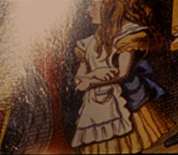 |
And what of Jerome Hiler's Words of Mercury, which screened, despite all indications to the contrary, in 16mm in the first instantiation of this program last Saturday at the PFA? The bait and switch struck again! No 18fps projector could be secured for the show at New People, so a washed-out, slightly herky-jerky HDCam version played instead. And it was clear that this was a very, very beautiful film, of singly, doubly, triply (and more-ly?) exposed footage, deftly edited, which I would like to see properly some day (those who had been at the PFA show as well were quite cognizant of the difference)! After the program, Hiler spoke eloquently of "mining for precious objects" and Mike Kuchar noted that he hadn't bothered to put his name at the end. Like Curious Light, Hiler's film incorporates images of the printed page, but it is the image that is paramount, not the word.
Though it is a video, I quite liked Berlin-based Sylvia Schedelbauer's Sounding Glass, with its combination of flicker-zoom and Bruce Conner-like emotive montage anchored by images of a forest and a man within it, with an audio track comprised mostly of soundscapes by local outfit Thomas Carnacki. Vincent Grenier's video Armoire: In Four Parts impressed me less, though its gimmickily-framed study of a bird in flight seen through a looking-glass was not entirely worthless.
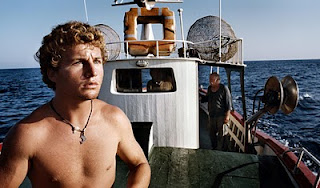 |
The Iranian film I really wanted to see was Goodbye by Mohammad Rasoulof, whose last two films blew me away at SFIFF. This one, however, is being presented digitally--could it have been shot that way? Seems unlikely--so I settled for Reza Mirkarimi's family potboiler instead. According to imdb this is the first Iranian Super-16 production, and I'd guess this format was chosen to facilitate the mostly hand-held photography by which the director sought to coax a sense of realism. Indeed, it's only in a few anomolous interstitial sequences that the film attempts (and achieves!) the sort of lyricism that typifies this national cinema. Yet, considering Mirkarimi's Felliniesque aspirations for his memory-inflected film about the days leading up to a wedding, this sort of poetry is precisely what is lacking. As the direction of the cast is too stilted to support a claim of verité, I can only describe the result as soap opera. Further frustrating matters, all manner of backstory is hinted at but never made explicit or even properly evocative of anything, so characters come off as cyphers. It must be said, though, that the film is very colorful.
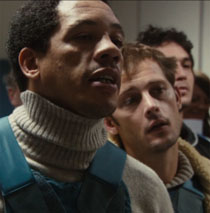 |
Dernière séance (Last Screening)
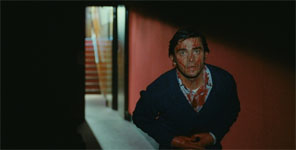 |